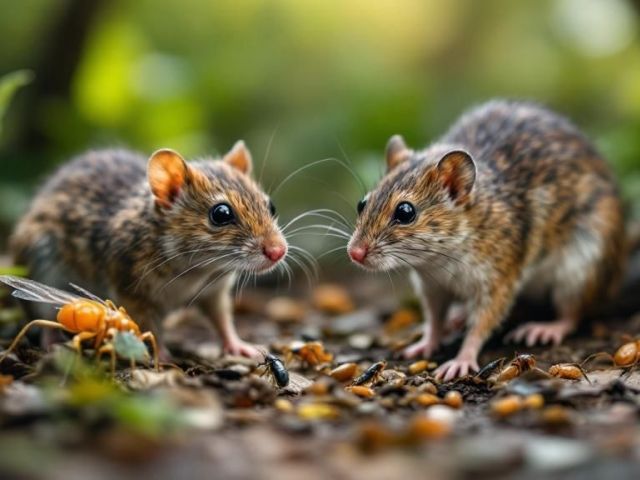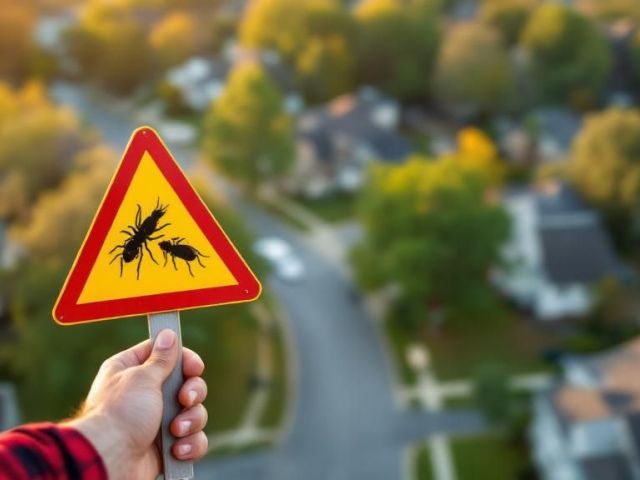Harnessing Diatomaceous Earth for Pest Control
Key Takeaways
-
Diatomaceous earth (DE) is a naturally occurring powder made from fossilized algae.
-
It works by dehydrating insects through their exoskeletons.
-
DE controls ants, bed bugs, fleas, cockroaches, spiders, and more.
-
It’s non-toxic, eco-friendly, and safe for use around children and pets when applied correctly.
-
Versatile for both indoor and outdoor pest control.
If you’re searching for a non-toxic, eco-conscious alternative to traditional pest control, diatomaceous earth (DE) deserves your attention. This ancient, naturally derived powder is quickly gaining traction among homeowners, gardeners, and organic farmers alike. But what exactly makes it so effective against pests? In this guide, you’ll discover how DE works, its various applications, tips for safe and effective use, and why it’s emerging as a preferred solution in integrated pest management strategies.
What Is Diatomaceous Earth and How Does It Work?
Diatomaceous earth is composed of the fossilized remains of microscopic algae called diatoms. These diatoms are rich in silica and, when ground into a fine powder, their jagged, abrasive structure becomes a formidable weapon against insects.
Unlike chemical pesticides, DE doesn’t poison pests. Instead, it physically penetrates their exoskeletons and absorbs the lipids (oils and fats) from their outer shells, leading to dehydration and death within 24–48 hours. This method of action means pests cannot build resistance to it, making it a long-term solution for pest prevention.
The Rise of DE in Modern Pest Control
Diatomaceous earth has been used in agriculture and construction for centuries, but its application as a pest control agent only gained mainstream attention in the mid-20th century. Since the first recorded use of DE as a pesticide in 1960, its adoption has steadily grown.
The global DE market is projected to reach $1.5 billion by 2030, growing at a CAGR of 5.0% from 2024 to 2030. Its effectiveness, low toxicity, and compatibility with organic farming practices have made it especially popular among environmentally conscious homeowners and farmers.
Common Household Pests DE Can Eliminate
Diatomaceous earth is effective against a broad spectrum of crawling pests. Here are some of the most common invaders it helps eliminate:
-
Ants
-
Bed Bugs
-
Fleas
-
Cockroaches
-
Carpet Beetles
-
Earwigs
-
Spiders
-
Silverfish
Because DE works mechanically, it can target these pests without harming humans or pets when used correctly.
Indoor and Outdoor Uses of Diatomaceous Earth
Indoor Applications:
-
Lightly dust around baseboards, under appliances, behind cabinets, and in wall voids where pests travel.
-
Apply in corners of closets or behind furniture for long-lasting pest control.
-
Use cautiously on carpets or bedding when treating bed bugs, and vacuum thoroughly after several days.
Outdoor Applications:
-
Sprinkle DE around the perimeter of your home, especially near cracks or openings where pests might enter.
-
Dust around garden beds and the base of plants to protect against slugs, beetles, and other garden pests.
-
Apply during dry weather; moisture reduces its effectiveness.
How DE Is Produced: From Earth to Application
DE begins its journey in ancient lake beds, where layers of fossilized diatoms are mined and processed. Once extracted, the raw material is purified and milled into a fine powder.
The process:
-
Mining fossil deposits from natural sources.
-
Purification to remove unwanted materials.
-
Grinding into fine dust suitable for application.
The final product is a fine, porous, silica-based powder that feels soft to the touch but is razor-sharp to insects under a microscope.
Sustainable and Safe: Why DE Appeals to Eco-Conscious Consumers
One of the biggest advantages of diatomaceous earth is its low impact on the environment. Unlike synthetic pesticides that introduce toxins into the ecosystem, DE:
-
Leaves no chemical residues.
-
Doesn’t contaminate water or soil.
-
Poses minimal risk to pets, kids, and beneficial insects when applied correctly.
These qualities make DE especially attractive for use in homes, schools, organic gardens, and food storage facilities. Even so, application precautions should still be taken.
Safety Guidelines:
-
Wear a mask to avoid inhalation.
-
Avoid applying during windy conditions.
-
Keep away from eyes and mucous membranes.
-
Store in a dry place to maintain its effectiveness.
Real-World Uses: What Homeowners Need to Know
Homeowners using diatomaceous earth often report success when using it for:
-
Preventing infestations: A perimeter barrier around the home deters pests from crossing into indoor spaces.
-
Targeted treatment: Sprinkling directly onto ant trails, roach hiding spots, or flea-infested pet areas.
-
Integrated pest management: Used alongside traps, sealing entry points, and maintaining cleanliness.
Note: While DE can be a powerful tool, pest infestations that persist may require the intervention of licensed professionals.
Natural Pest Control Without the Chemicals
If you value green living, DE is a valuable addition to your pest control toolkit. Its physical mode of action eliminates pests without compromising your household’s safety. As a part of an integrated pest management plan, it reduces the need for repeat chemical sprays and supports a healthier home environment.
Whether you’re dealing with a flea problem or protecting your garden from beetles, diatomaceous earth delivers a solution that’s both effective and aligned with sustainable values.
DOA Pest Service, a Nashville-based provider known for safe and effective pest treatments, integrates solutions like DE into broader pest control strategies for clients seeking greener options. If you’re unsure about applying DE or need professional help for persistent infestations, they can guide you through your next steps.
The Next Step Toward Pest-Free Living
In a world leaning toward sustainability, natural solutions like diatomaceous earth are more relevant than ever. Whether you’re a homeowner aiming to protect your property or a gardener nurturing your plants, DE empowers you with a solution that is affordable, accessible, and environmentally sound.
For those in the Nashville area, professional services can provide peace of mind by assessing whether diatomaceous earth or other eco-friendly methods are the right fit for your situation. Whether it’s an annual prevention plan or emergency response, modern pest control doesn’t have to rely on harsh chemicals.
Frequently Asked Questions
How long does it take for DE to kill pests?
Most insects die within 24 to 48 hours after contact with DE, depending on environmental conditions and exposure.
Can I use DE around my pets and children?
Yes, but with care. Avoid creating airborne dust. Apply when children and pets are not present, and let it settle before allowing them back in the area.
Does DE lose effectiveness over time?
Not unless it becomes wet. Once dry, DE regains its potency. Reapply after rain or cleaning.
Is it effective against flying insects?
DE works best on crawling insects. It’s not very effective against flying pests unless they land and crawl through treated areas.











